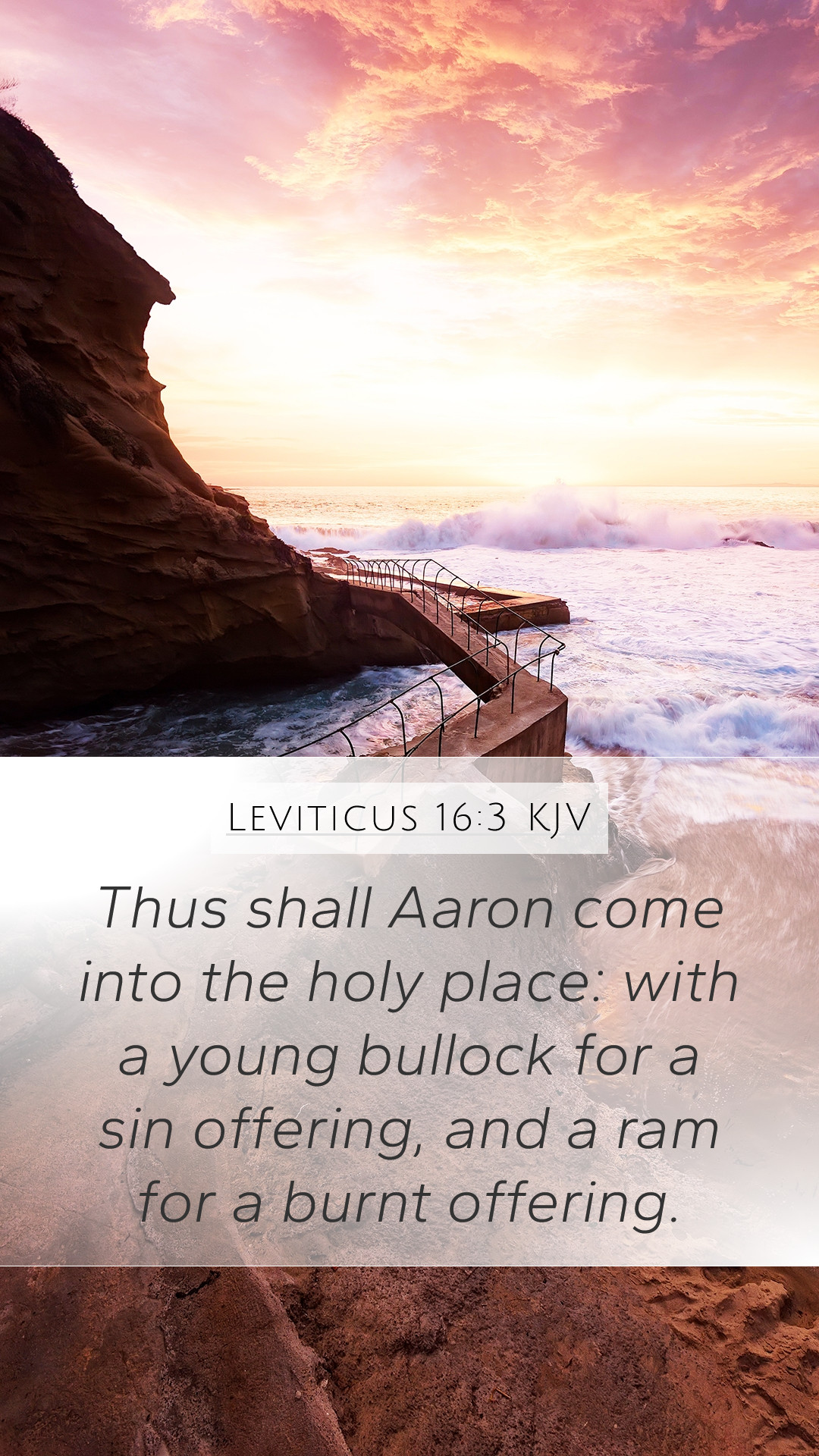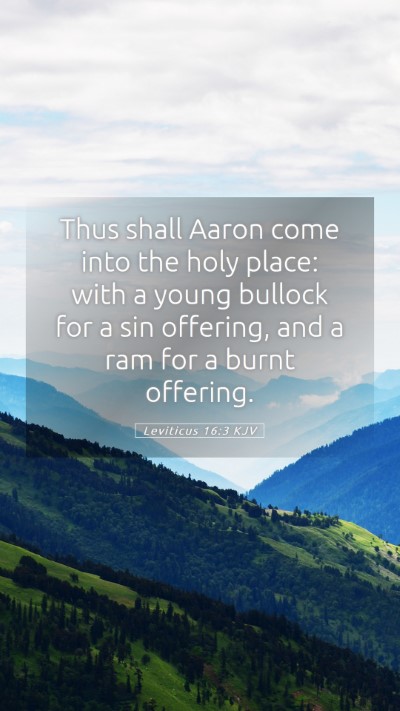Understanding Leviticus 16:3
Leviticus 16:3 reads: "Thus shall Aaron come into the holy place: with a young bullock for a sin offering, and a ram for a burnt offering." This verse is part of the detailed instructions given to Aaron regarding the Day of Atonement, known as Yom Kippur, a day devoted to repentance and seeking forgiveness.
Bible Verse Meanings and Commentary
In interpreting Leviticus 16:3, several public domain commentaries shed light on its significance and the elaborate sacrificial system of the Old Testament.
1. Matthew Henry's Commentary
Matthew Henry points out that the holiest part of the tabernacle is where Aaron must approach God, emphasizing the seriousness of coming into God's presence. He notes that the specified sacrifices—a young bull for a sin offering and a ram for a burnt offering—symbolically represent the need for atonement and dedication to God.
- Symbolism of Sacrifice: The young bullock represents sin offering, which acknowledges wrongdoing; the ram as a burnt offering signifies total dedication to God.
- Holiness of Approach: The verse illustrates the sanctity distanced approach individuals must take when dealing with holiness.
2. Albert Barnes' Notes
Barnes provides insights into the significance of these offerings in Israel's religious life. He highlights that the Day of Atonement was vital for the Israelites, a time for communal repentance and cleansing of sins, reinforcing their covenant with God.
- Communal and Individual Aspect: The offerings serve both community needs and individual responsibilities.
- Historical Context: Barnes emphasizes the rich historical backdrop, where the offering's particulars were deeply entrenched in the Mosaic Law.
3. Adam Clarke's Commentary
Clarke goes into the practical aspects of this verse. He remarks on the necessity of preparation when entering the holy place, including the sacrifices that Aaron is instructed to bring. This reflects God's divine order and the importance of approaching Him with the right heart and intentions.
- Preparedness: Clarke emphasizes the need for internal as well as external preparation to conduct these sacred rituals.
- Sacred Authority: Highlighting Aaron's unique role as high priest, Clarke notes that these instructions separate him from normal priests.
Understanding Scripture and its Applications
The verse poses essential questions around how to interpret Bible verses, particularly in understanding the significance behind sacrifices in biblical tradition.
Bible Study Insights:
- The sacrificial system illustrates the gravity of sin and the need for atonement in one’s relationship with God.
- This verse is a reminder of the seriousness with which we should approach God, emphasizing preparation and reverence.
In-depth Bible Verse Analysis
With reference to valuable Bible study resources, it is vital for Bible study groups to ponder how Old Testament themes like sacrifice relate to New Testament teachings, especially concerning the ultimate sacrifice of Christ.
Related Cross References:
- Hebrews 9:7 - Discussing the high priest's role and the necessity of sacrifices.
- Leviticus 4:3 - The law concerning sin offerings.
- Exodus 30:10 - Connects to the atonement rituals.
Conclusion
Leviticus 16:3 serves not only as a historical record of Israel's worship practices but as a profound spiritual principle. It teaches about the seriousness of sin and the means provided for atonement in the context of faith. For those looking to deepen their Bible study insights, this verse opens a venue for understanding difficult Bible passages and applying these ancient practices to modern faith contexts.


